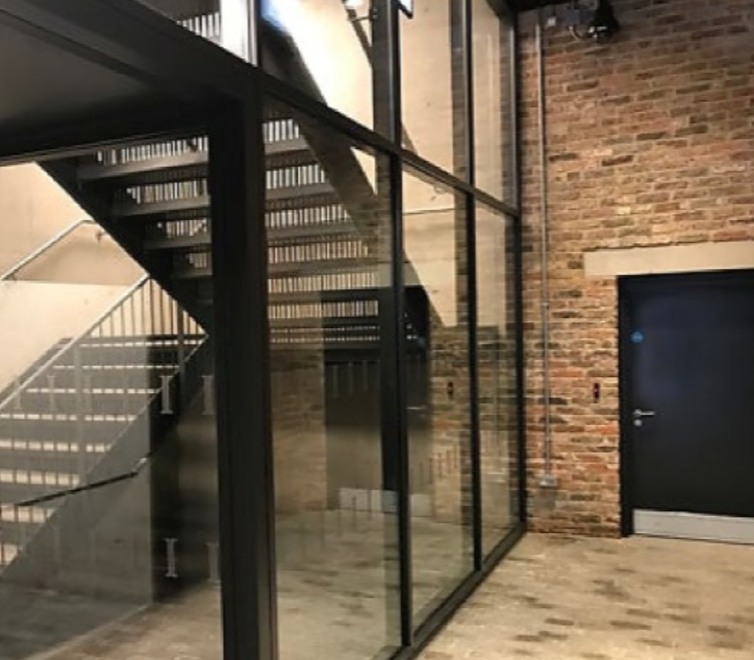Coal Drops Yard

|
| In major cities around the world, historic buildings form a significant part of the landscape. Often providing glimpses into the proud industrial heritage they once helped to fuel, these buildings often struggle to find a purpose in today’s fast-paced urban societies. |
[edit] Introduction
Times have changed, how people live and work are vastly different and buildings must accommodate this if they are to remain purposeful today. Glazing can play an integral role in the transformation of these often-forgotten architectural gems, bringing visually-stunning designs to life, while ensuring practicality and safety.
London’s Coal Drops Yard, located just a stone’s throw away from King’s Cross – one of the city’s busiest travel hubs – is one such building. Once a powerhouse of the industrial era, the Yard’s Victorian buildings were used for warehousing for more than a century before playing host to some of the city’s vibrant night life venues. Since 2007 they have stood unused.
Now, little more than a decade later – and more than 150 years after their initial construction – Coal Drops Yard has been transformed into one of London’s premier shopping destinations.
[edit] Connecting old and new
Made up largely of two 19th Century coal warehouses, the site needed to be drastically re-thought to evolve into a new retail complex comprising more than 50 shops and restaurants. With high levels of footfall anticipated, the safety of individuals would need to be a primary factor in its redesign. Additionally, creating light-filled spaces to attract shoppers from across London would be integral to the project’s long-term success. As a result, specifying materials capable of balancing safety requirements alongside aesthetics and practicality was critical.
Supplying in excess of 150m2 of Pyroguard Protect toughened fire-rated glass to various classifications – including E60, EW120 and EI60 – to the project, Pyroguard was able to fulfil the designer’s safety requirements, while delicately balancing the need for aesthetic excellence to contribute to the repurposing of these historic buildings. Working closely with Propak Architectural Glazing who were enlisted to design, manufacture and install a large range of steel glazing systems for the project, Pyroguard created a bespoke thickness of 31mm, instead of the traditional 25mm for the EI60 requirement, to perfectly complement the systems.
With glazing having a critical role in the designer’s vision of Coal Drops Yard, it would be responsible for providing the transparent features which flood the site with natural light and bring the industrial buildings into the modern day. Besides its architectural significance, the project’s glazing also has inherent safety characteristics, designed to keep occupants safe in the event of a fire.
Custom manufactured, Pyroguard Protect toughened fire-rated glass can be created in expanses large and small, equipping fabricators with the flexibility needed to fulfil expectations in ambitious architectural projects. It also provides protection against flames, smoke and radiated heat, in addition to impact classification to EN12600, facilitating the transmission of natural light, as well as providing acoustic control and thermal and solar performance. Certified for use in steel, aluminium and timber frames, it was selected as the perfect partner for the steel frames designed by Propak for Coal Drops Yard.

|
To discover more about Pyroguard’s range of fire rated glazing solutions visit http://www.pyroguard.eu
This article originally appeared as 'Breathing new life into historic buildings' in Architectural Technology Journal (at) issue 132 published by CIAT in winter 2019. It was written by Andy Lake, Pyroguard.
--CIAT
[edit] Related articles on Designing Buildings Wiki
IHBC NewsBlog
IHBC Annual School 2025 - Shrewsbury 12-14 June
Themed Heritage in Context – Value: Plan: Change, join in-person or online.
200th Anniversary Celebration of the Modern Railway Planned
The Stockton & Darlington Railway opened on September 27, 1825.
Competence Framework Launched for Sustainability in the Built Environment
The Construction Industry Council (CIC) and the Edge have jointly published the framework.
Historic England Launches Wellbeing Strategy for Heritage
Whether through visiting, volunteering, learning or creative practice, engaging with heritage can strengthen confidence, resilience, hope and social connections.
National Trust for Canada’s Review of 2024
Great Saves & Worst Losses Highlighted
IHBC's SelfStarter Website Undergoes Refresh
New updates and resources for emerging conservation professionals.
‘Behind the Scenes’ podcast on St. Pauls Cathedral Published
Experience the inside track on one of the world’s best known places of worship and visitor attractions.
National Audit Office (NAO) says Government building maintenance backlog is at least £49 billion
The public spending watchdog will need to consider the best way to manage its assets to bring property condition to a satisfactory level.
IHBC Publishes C182 focused on Heating and Ventilation
The latest issue of Context explores sustainable heating for listed buildings and more.
Notre-Dame Cathedral of Paris reopening: 7-8 December
The reopening is in time for Christmas 2025.
















